In the rapidly ascending realm of electric mountain bikes, the 2024 landscape presents a thrilling opportunity for savvy business professionals to revolutionize their offerings. Electric mountain bikes (eMTBs) are not just transforming the trails; they’re redefining mobility, and merging eco-consciousness with cutting-edge technology to deliver a product that resonates with the modern consumer’s desire for adventure, sustainability, and efficiency. As these bikes gain traction, they promise a robust addition to portfolios, ensuring that companies who pedal alongside the eMTB revolution are well-equipped to meet the dynamic demands of a market that’s racing towards an electric future.
Table of Contents
1. Pedaling through the market: A 2024 snapshot
2. The buyer’s terrain: Key considerations for eMTB selection
3. Leading the pack: Top eMTB picks and innovations
1. Pedaling through the market: A 2024 snapshot
The global eMTB marketplace: Trends and growth projections
In 2023, the electric mountain bike market is not just on an upward trajectory; it’s defining the very path of progress in sustainable transportation. The market size has already reached a significant USD 5.13 billion. This figure is not just a testament to the industry’s vitality but also a beacon signaling the market’s potential and the confidence of investors and consumers alike.
As we pedal into 2024, the electric mountain bike (eMTB) market is not just climbing—it’s soaring, with projections indicating growth from USD 5.13 billion to an impressive USD 9.27 billion by 2028, marking a robust CAGR of 12.56%. This surge is not just numbers; it’s a reflection of a global shift towards sustainable, efficient, and exhilarating modes of transportation that eMTBs epitomize.
Europe, leading the charge, is not only embracing this trend but is also setting the pace for the global market. The continent’s commitment to eco-friendly transport solutions has catalyzed the adoption of eMTBs, with governments incentivizing the shift away from fossil fuels towards electric alternatives. This is evident in the UK’s and France’s aggressive policies to phase out internal combustion engines, further fueling the eMTB market’s expansion.
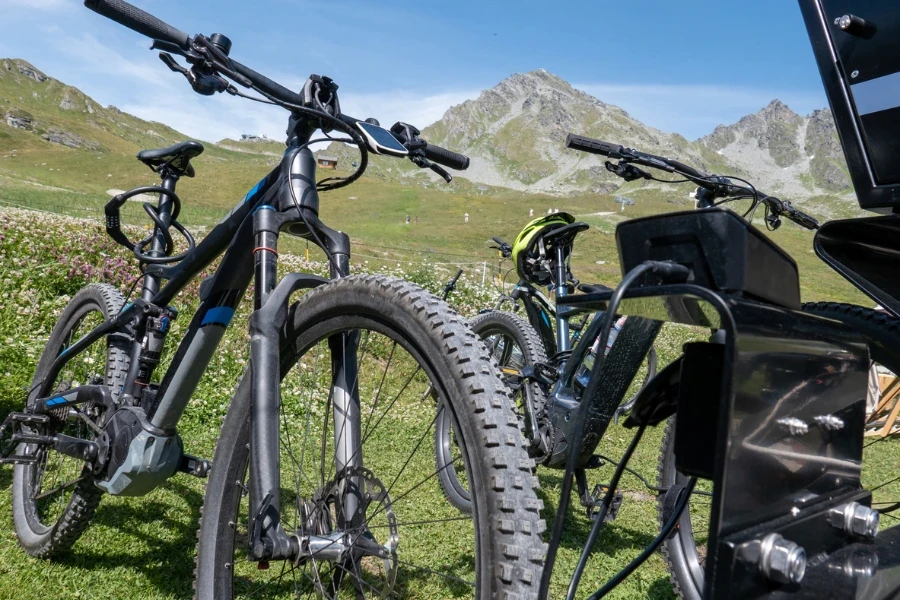
Riding the wave of innovation: Technological advancements in eMTBs
Innovation is at the heart of this growth, with manufacturers pushing the boundaries of what’s possible. Technological advancements are making eMTBs lighter, more durable, and more feature-rich, catering to a diverse range of consumer needs. For instance, the Ibis Oso’s introduction of a full-carbon-fiber frame and upper-link suspension de-link technology sets a new benchmark for the industry, marrying performance with sustainability.
Yet, it’s not just about the bikes themselves. The broader implications of this growth touch on urban planning, with eMTBs offering a solution to traffic congestion and urban mobility challenges. As cities become more congested, the allure of a personal, efficient, and environmentally friendly mode of transport becomes increasingly compelling.
This momentum is not without its challenges, however. Regulatory landscapes are evolving, with bodies like the Union Cycliste Internationale setting strict limits on motor power and speed to ensure safety and fair play. These regulations, while necessary, also shape the market, influencing design and functionality.
The eMTB revolution is more than a trend; it’s a transformative movement that’s reshaping the way we think about transportation, recreation, and our environmental footprint. As we look to the horizon, the trail for eMTBs is steep, but the industry’s gears are set for a high-powered ascent.
2. The buyer’s terrain: Key considerations for eMTB selection
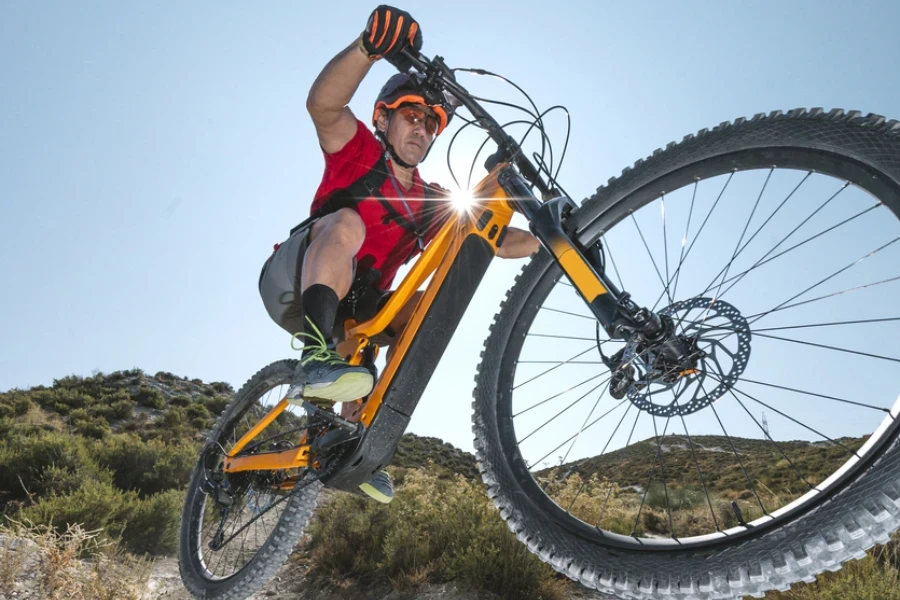
Navigating the eMTB market requires a keen understanding of the intricate balance between power and performance. For business professionals tasked with curating a selection of electric mountain bikes, several critical factors must be weighed to ensure that the products not only meet consumer expectations but also stand out in a competitive landscape.
Powertrain perfection: Motor might and battery life balance
The heart of any eMTB is its powertrain, where the synergy between motor strength and battery longevity dictates the bike’s appeal. A robust mid-drive motor is often the hallmark of a superior eMTB, offering a center of gravity that enhances handling. Battery life remains a pivotal concern, with advancements leading to more efficient energy use without compromising on power. Retailers must prioritize models that strike an optimal balance, ensuring that riders can enjoy extended adventures without the anxiety of a drained battery.
Trailblazing tech: Suspension, brakes, and build quality
The thrill of mountain biking is in the ride, and the technology that underpins suspension systems and brakes is crucial. Superior suspension travel that can handle the rigors of off-road terrain, coupled with reliable hydraulic disc brakes for precise stopping power, is non-negotiable for today’s discerning riders. The build quality also cannot be overlooked; it’s the foundation of durability and rider confidence. Retailers should seek out eMTBs that are not just built to last but also provide the technological edge that elevates the riding experience.
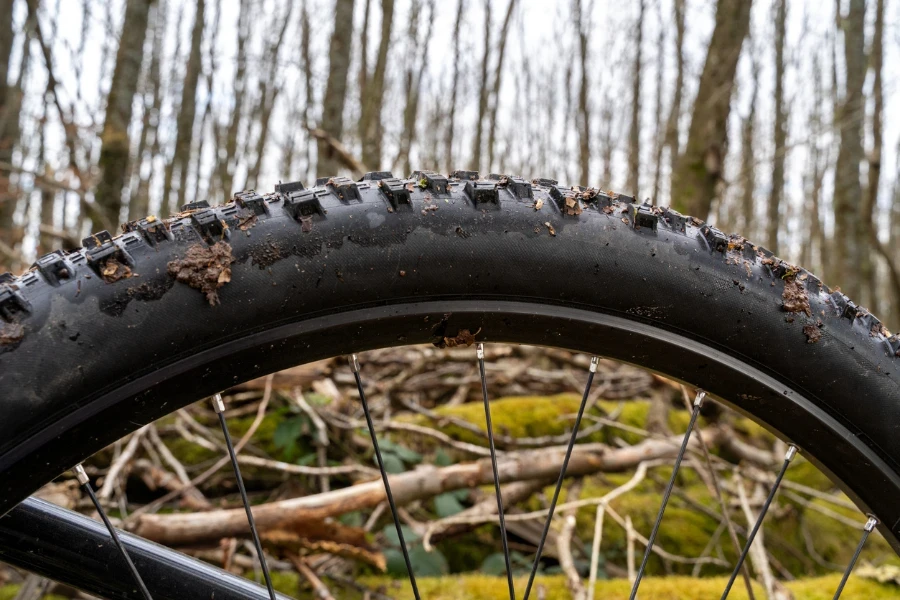
The price of power: Cost considerations for every budget
Cost is always a consideration, and the eMTB market presents options across the spectrum. From the budget-conscious models, which do not skimp on essential features, to the premium segments where price tags are justified by cutting-edge innovations and superior materials. Retailers must curate a range that caters to both ends of this spectrum, ensuring that quality is maintained throughout.
Classifications and compliance: Navigating eMTB regulations
Compliance with regulations is a critical aspect that cannot be ignored. With different regions imposing various classifications on eMTBs, retailers must be well-versed in these to avoid costly missteps. Understanding the legal framework that governs motor power and speed limits is essential for selecting bikes that are not just powerful but also permissible on the trails and city streets where they will be ridden.
In essence, selecting the right eMTBs for resale is about understanding the nuanced needs of the market and matching them with products that deliver on performance, safety, and legal compliance. It’s a balancing act that, when done correctly, can position a retailer as a trusted leader in this electrifying sector.
3. Leading the pack: Top eMTB picks and innovations
In the race to the top of the eMTB market, certain models stand out in 2024, setting standards for others to follow. These bikes represent the pinnacle of what is currently possible in electric mountain biking technology, design, and performance.
The best of the best: A curated list of 2024’s finest eMTBs
The market leaders in eMTBs for 2024 are those that have successfully combined power, performance, and practicality. Bicycling.com’s selection of top contenders includes models renowned for their robust motors, long-lasting batteries, and intuitive handling. These eMTBs are not just bikes; they are a fusion of innovation and engineering designed to cater to the most demanding of riders.
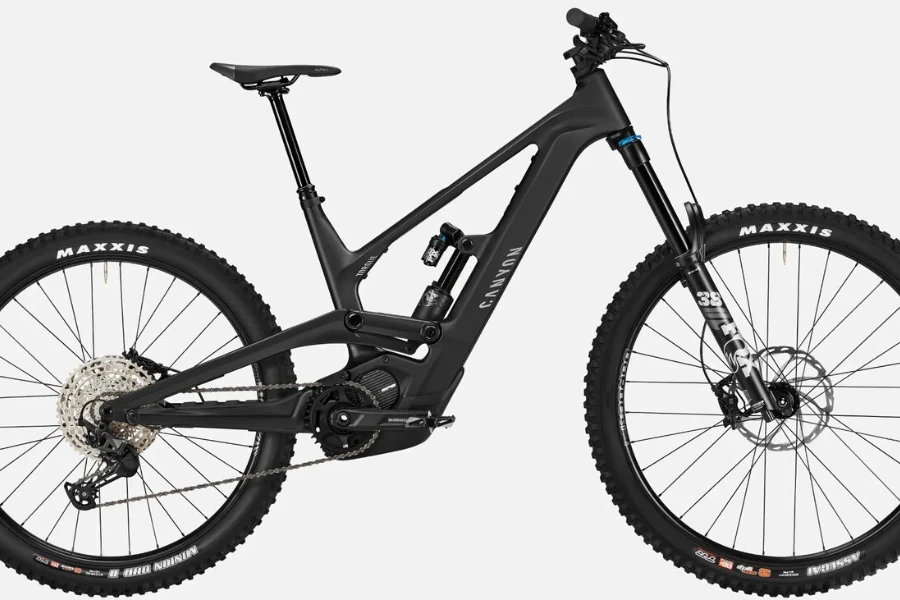
Feature focus: Standout specifications for diverse demands
Each top-tier eMTB brings something unique to the table. Some models, as noted by eBike-MTB, offer advanced suspension systems that provide unmatched control and comfort on rugged terrains. Others boast braking systems that set new standards for safety and reliability. For the retailer, understanding these features is crucial in guiding customers to the bike that best fits their specific needs.
The weight debate: eMTB load limits and rider compatibility
Weight considerations are paramount in the eMTB selection process. With the industry trending towards more robust designs, as highlighted by BikeRadar, it’s essential to consider the total load limit of each model. This ensures that every rider, regardless of size, can find a safe and suitable eMTB, making inclusivity a key selling point.
From carbon to connectivity: Frame materials and smart tech integration
The choice of frame material, whether it’s the lightweight agility of carbon or the rugged durability of aluminum, can significantly impact the bike’s performance. Moreover, the integration of smart technology, such as GPS tracking and performance monitoring systems, is becoming increasingly common, offering riders a more connected and personalized experience.
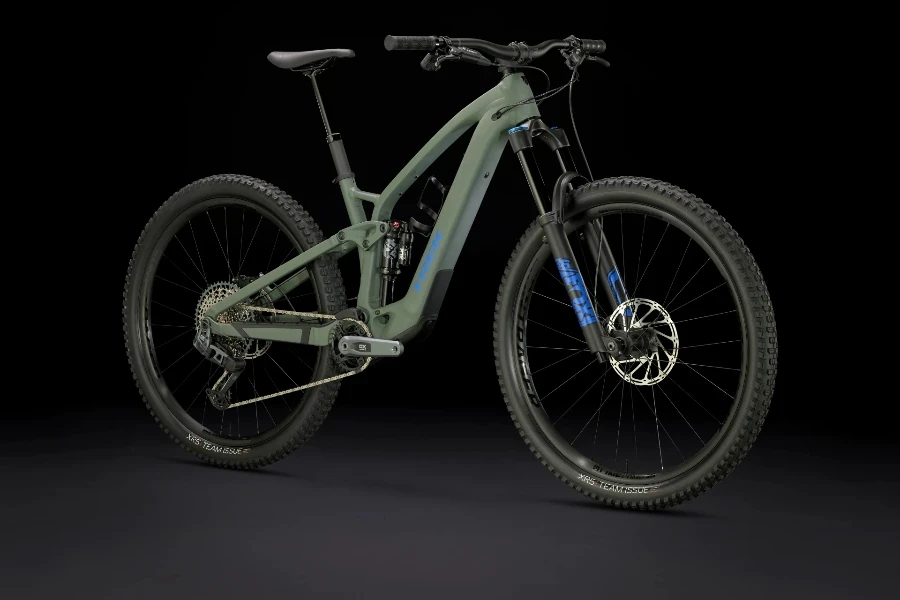
Conclusion
All the signs reflect a burgeoning demand for e-MTB. The market’s expansion is underpinned by a combination of consumer enthusiasm for outdoor activities and a growing awareness of the environmental benefits of electric bikes. Consumers increasingly gravitating towards eMTBs for both leisure and commuting purposes. This shift is not just a fad but a conscious choice for a cleaner, more efficient mode of transport. The market’s prospects are further bolstered by the introduction of cutting-edge models from leading brands.
In summary, the 2024 eMTB market is a landscape of opportunity, marked by significant sales, a robust market size, and prospects that promise a greener, more electrified future in personal and recreational transport
The future is electric. Companies should ride the wave of the blooming e-MTB and it is evident that embracing eMTB trends means embracing business success.




